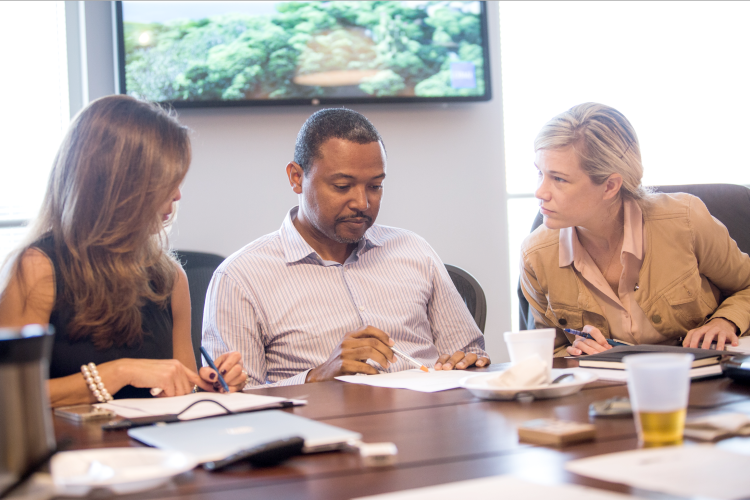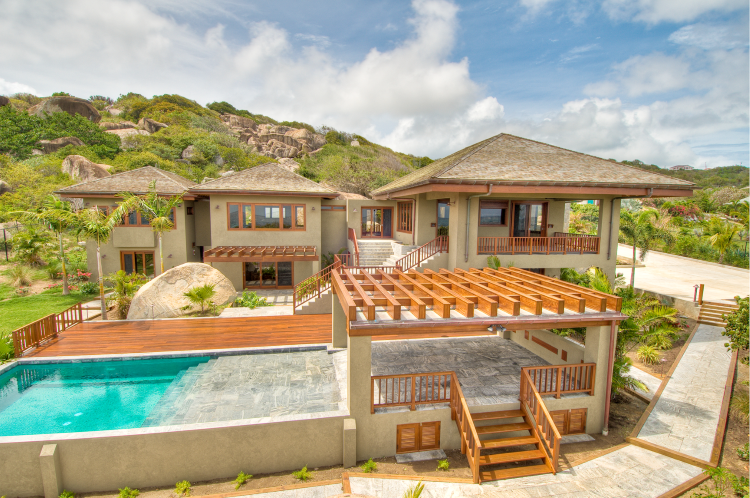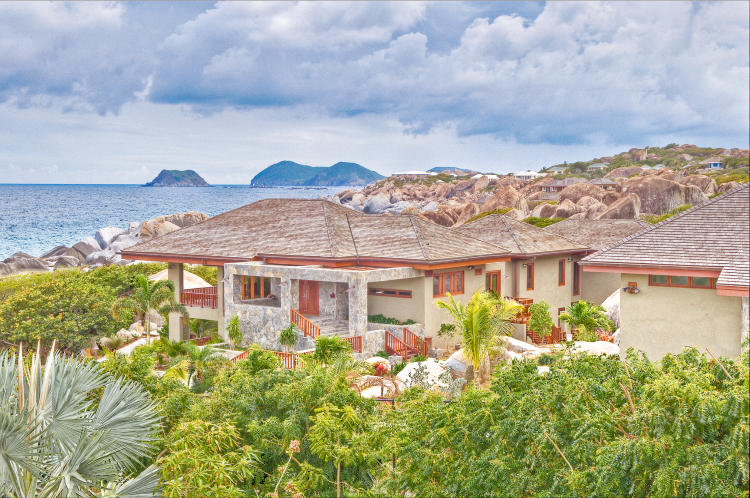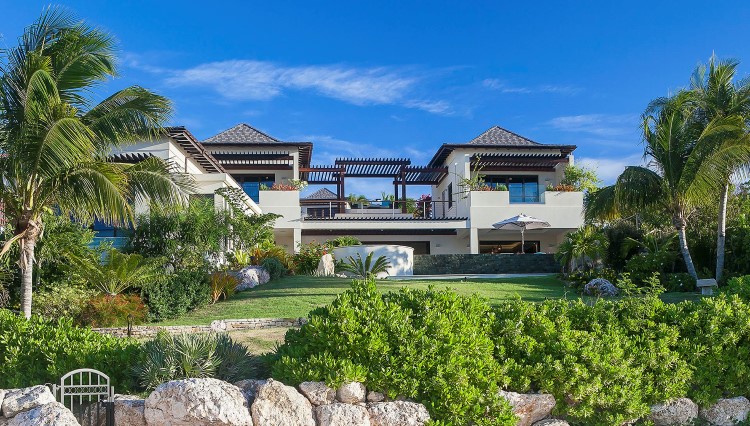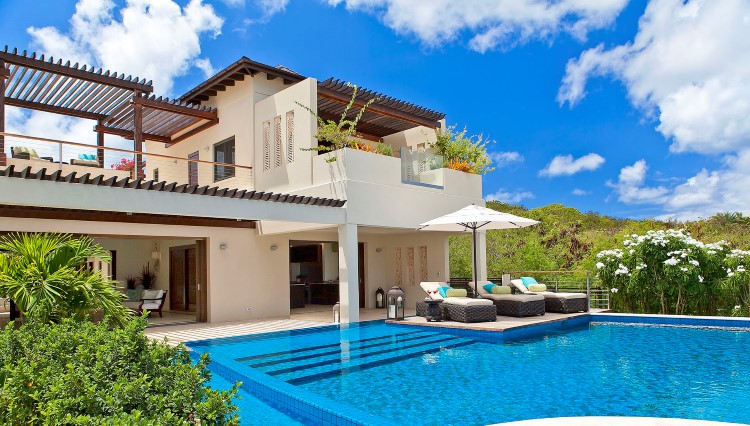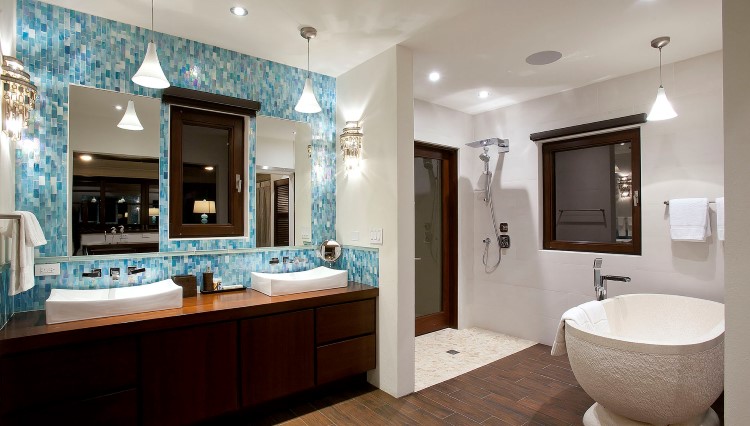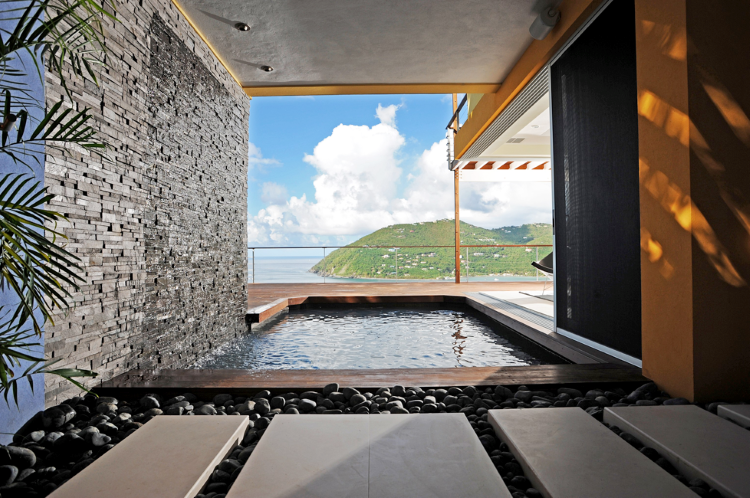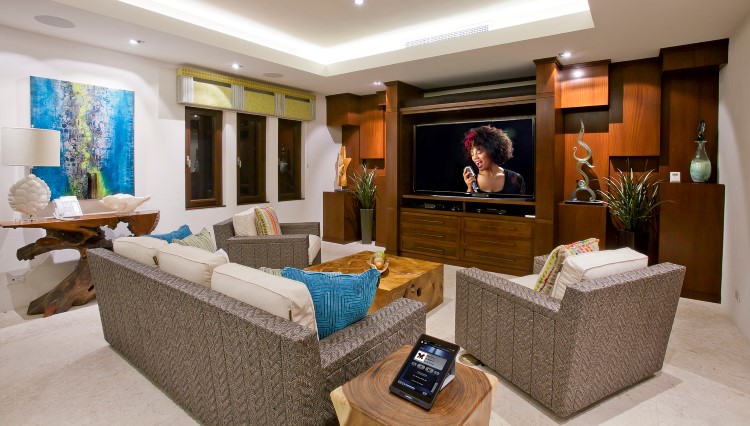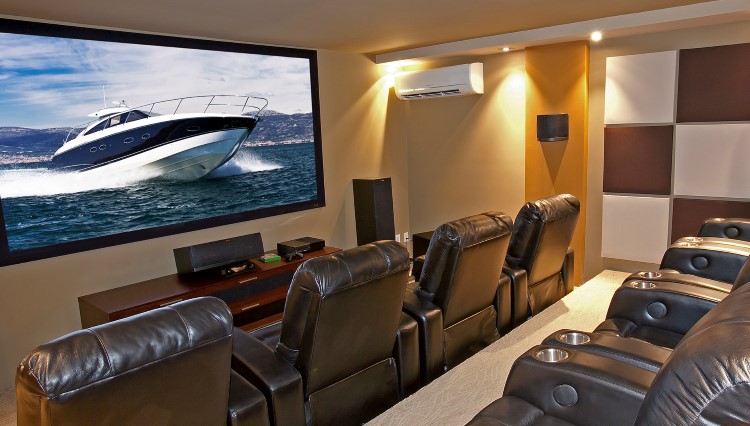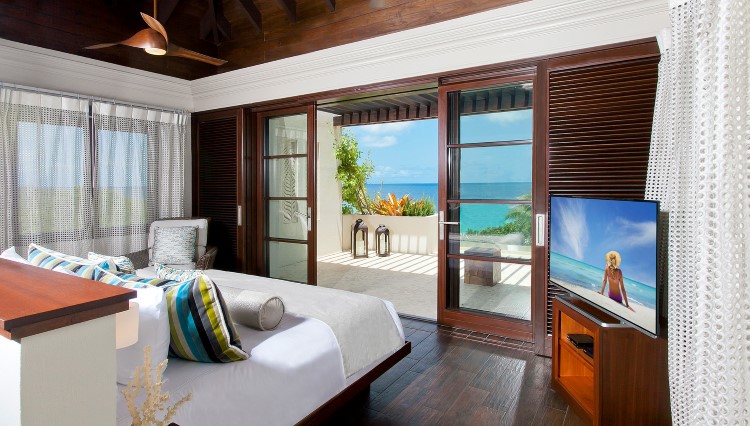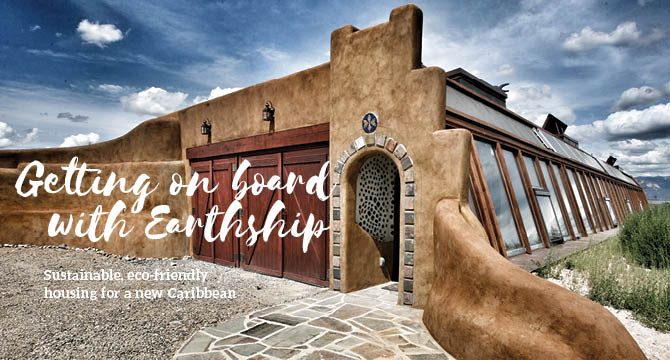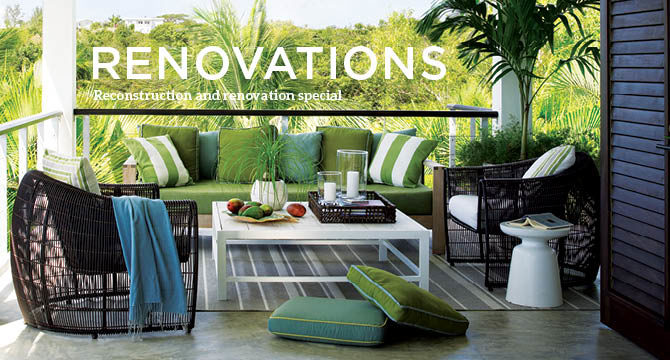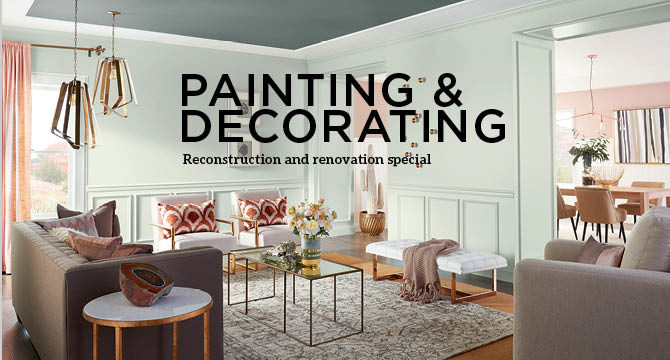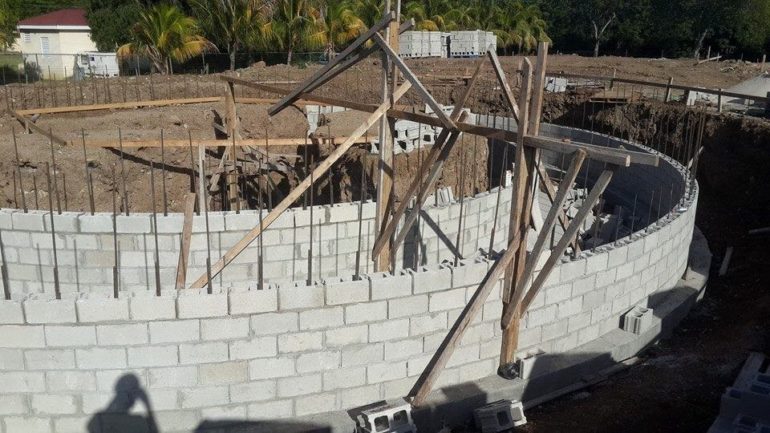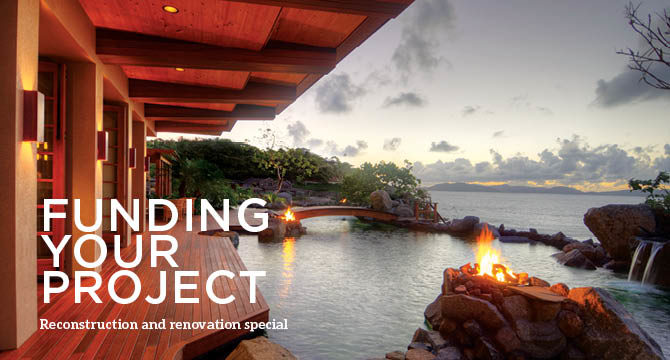Brought to you by OBMI
Information provided by Debi Carson – Interior Designer NCIDQ & Artist, Marvin E. Flax – OBM International, and Rusty Henderson – AVL
Like all the sections within this guide, design considerations are a significant part of constructing or renovating your home. Astute planning is key, so here are some steps to escort you through contemplation over your home’s appearance.
Architecture
The process of creating a new structure is an exciting one.
The initial phases of design are for the property buyer to explore their needs, budget, site conditions, and overall vision for their project.
It is important to establish a qualified professional design team, who are revered and renowned for their communication skills.
An architect is integrally involved with guiding your decisions.
From large choices—determining the appropriate spot on the property in order to capitalise on views and airflow ventilation—to finishing touches—such as specifying types of light fixtures and door hardware that reinforces your home’s character—an architect is your best friend.
Just about every decision in the building or redesign of a home requires your architect’s input. During this process, your architect should become your trusted advisor for everything design-related, coordinating all consultants, vendors, and tasks related for all the professionals required to build your dream home.
Design and construction is a wondrous collaboration of skills and talents, but communication is vital to this process; the expressed strengths of each member of the chosen team are to be maximised.
An individual should do as much research as possible prior to meeting an architect. Research at the onset of their project will help them understand what appeals to them from both a design and cost standpoint.
There are several design related websites such as Houzz, Pinterest, and ArchDaily. They exhibit excellent examples of completed spaces for all design tastes that will help guide you to understand what your dream home will look and feel like.
Visit the websites and if possible, the completed homes of the architect you would like to work with. Meet with them to get a sense of their listening and project management skills, as well as their design abilities as this will prove very beneficial to the flow of the process. Communication is critical to a smooth homebuilding project. It’s significant for you to ask and understand how your architect will not only manage your project, but communicate with you along the way.
Keep printed copies of what you prefer and dislike regarding styles and finishes to show your architect’s design team, so they clearly comprehend what you’re seeking. This step will ensure your home is not only amazing, but is a reflection of you.
A home can be the biggest investment you can make; therefore, it is good to retain the services of an experienced, passionate architect who will steer you in the right direction, creating environments for you to live out your dreams.
Architects become much more than designers of dream homes. Frequently, an architect will be the focal point of your homebuilding project, translating your desires into intimate, personal, and functional spaces that feel exactly as you’d imagined.
Code and Surveys
In the BVI, we work to local and international codes. Surveys are executed to establish the property details as it relates to land and potentially existing structures.
Land surveys establish the property lines, set-backs, and existing features to highlight in the landscape.
As an architectural team seeks to protect their client, some of the most important codes are those that relate to health and safety for the occupant.
Property structure surveys identify the current conditions, challenges, or advantages of elements that will affect your project scope.
A topographical and land survey early on is important to establish what the property has to offer with regard to its nuances, features, and potential challenges.
The land provides the palette or background for you to create your vision; this encompasses consideration about focus features, orientation to views, and observing natural weather patterns.
You might be able to identify qualities such as a beautiful flowering tree, a specific viewpoint, or a boulder that you can incorporate into your design.
In challenges, you might find areas of steep slope, natural water run-off, dense vegetation, or relationship to adjacent traffic or neighbours.
Inspections within surveys are important and it’s vital they are executed by certified professionals.
Often an initial visual inspection can reveal a great deal, but it’s important as you proceed through evaluations to work with a team that can help you interpret inspection reports against your budgets, needs, and desire.
Inspections should cover every fine detail comprising pest control to establishing termite damage or nests on the property, to electrical, plumbing, and structural issues.
Establish a great team that you can communicate with easily and empathise with your vision. The goal for your team should be to work as a single unit to make your dream come to life.
Project and Cost Management, Timeframes and Scope of Work
In working to identify the scope of work, your vision for your project and any potential conflicts will be significant to your success.
You can minimise delays with a strong organisation, a fundamental management approach, and in making confident well-advised decisions.
As the scope of work is identified, the project timeline is outlined and reviewed. A professional will advise you on the anticipated timeline based on their experiences in the local market.
The timeline for construction should take into consideration the typical weather patterns for the seasons, holidays, and logistics for manoeuvring materials to your project site.
Delays or shortages of resources can cause an impact to your timeframe and costs, so this design consideration includes time and financial attributes.
Structural Engineering
A structural engineer is a crucial member of the professional disciplines of design in your project. They are able to advise you in all aspects of your structure. Think of this part of your project as the bones of your building; it’s very important to have a good infrastructure and foundation.
During the construction process, the structural engineering team works alongside the architects and contractors to ensure the quality, durability, and performance in our seismic and hurricane active region; this is considered in conjunction with codes and local environmental requirements. Good structural engineers will have comprehensive knowledge of typical construction methods and materials supplied in our region.
Quantity Surveying
The exercise of a Quantity Survey (QS) grants power to you and the project management team to identify and control costs.
A QS will provide a ‘line item’—a unit of information in a document, record, or statement, shown on a separate line of its own—against supply and labour. This gives you a clear picture of what’s driving the costs. This is also a valuable tool during the construction process to monitor the budget and spending.
Specialist Design –Kitchens/Lighting/MEP (Mechanical, electrical, plumping)/AV (Audio visual)
The entire team is important to work together to the goal of a complete design solution for you.
Interior design is the element that analyses the function and safety in a space, in the structure or any defined space for the inhabitant. The team will work together with you in detail to establish not only the scale or footprint of a space that is required, but all the components of the function or activity that occurs in a space.
From the concept of the desired atmosphere to highlighting the nuances of the details, a qualified designer will be a great asset to you. In the beginning phases, they work with you in detail to identify design elements for success and work through the project from documentation to installation phases. They assist in implementation down to the last details.
The BVI has many resources for specialty consultants and with the help of your architect, engineer, and interior designer, you can identify where specialists are able to add value to your project.
Consultants in equipment and often specialty product suppliers will be able to advise based on their knowledge of product, experience of installation, and durability for the application. This can range from lighting, audio-visual, to alternative energy and more.
To ensure reliability and save a lot of money, the best way to integrate technology into any property is to plumb it in at the beginning.
If you don’t, it will be extremely expensive and messy to chip out the concrete and try to add it in later. The key difference is having components that are connected by a wire, rather than wirelessly, which is especially problematic with concrete construction. For example, it’s good to place a WiFi radio in every room to ensure good signal, but each radio needs a wire that runs back to a central location. If you don’t have this wire, there’s a very good chance the signal will be weak and Internet speeds will be slow.
The first thing to do when designing the home is to ask yourself a few simple questions and relay them to the architect.
Where do you need Internet, music, television, and possibly surveillance?
For more advanced homes, you might need to ask yourself about lighting control and automated shades. At this stage, that’s all you need to do. To get a detailed proposal and drawings for construction, you would need to engage a company who will map out where the conduits should go and provide you with a detailed proposal. The architect typically calls the company a few months before the drawings go out to bid.
There are many idiosyncrasies with integrating technology in the BVI. We suggest engaging someone as early as possible to get the essential conduits roughed-in at the very least.
Tropical Weather – Advice for Materials
Investing in quality materials and construction methods, will extend the life and value of your design.
Maintenance and the projected need for replacement are top considerations in our corrosive environment. Working with team members, suppliers, and installers that are well-versed in our challenges will have great impact on your sustainability.
An ill-prepared home owner may face issues e.g. If a hurricane rated door requires a very deep threshold, but you’ve not made provision for that in your architectural drawings, when your floor slab is poured, you will have a potential cost and installation issue.
In selecting materials for your home in other regions, there are many grades or levels of quality offered. It’s important to do your research and make educated decisions along the way. The Caribbean environment creates challenges not only with the salt in the atmosphere, but also pests, weather, wind, sun, and rain.
Many products do not offer warranties within one mile of the ocean. This creates a challenge on an island that is only two miles wide; you’re always within one mile of the sea. Work with manufactures that have a proven track-record in our region.
Utilising tropical hardwoods such as Mahogany or Andiroba, or high grade powder-coated Aluminium is great for doors and windows.
For other elements, consider utilising high-quality stone or porcelain underfoot, aluminium or stainless steel for working parts, and sun and stain resistant fabrics for your soft goods.
Alternative energy and LEDs are great to consider in your solutions to cut down on running and replacement costs.
TOP TIPS
- Interview your potential architectural team and give yourself the opportunity to connect with them in the journey of a shared vision to make your dream come true!
- Learn from other projects in your area. Let your architectural, construction, and management team show you success stories in your region
- In the establishment of your team, be an open communicator with any challenges, your budget, design concerns as well as your expectations and desires
- Work together to establish best means and times for communication about your project for the process to run more smoothly
[ts_fab]
